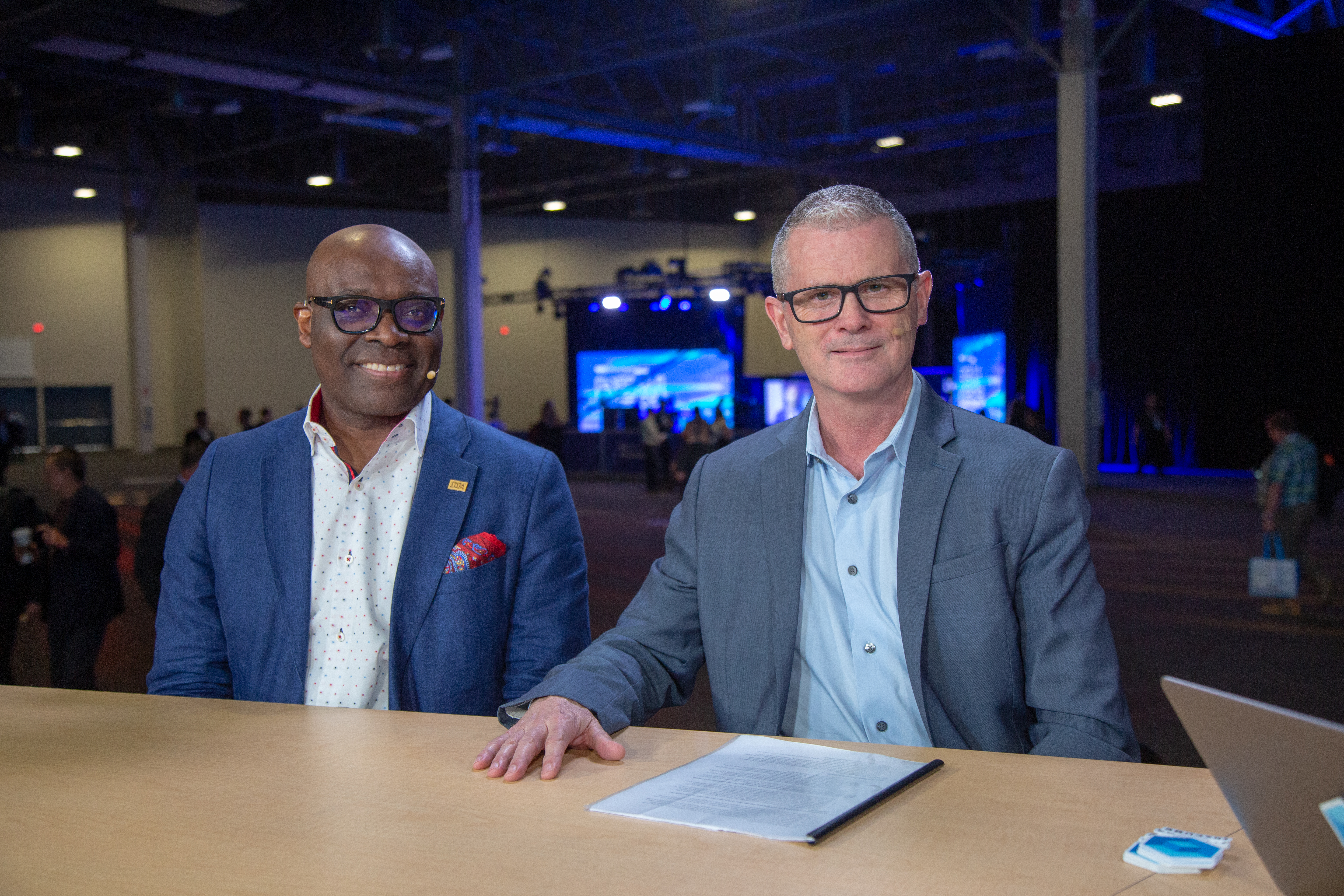 CLOUD
CLOUD
 CLOUD
CLOUD
 CLOUD
CLOUD
Dell Technologies Inc. announced this week that the company is going all-in with hybrid cloud architecture. Its latest move is a partnership with IBM to bring forth products like Dell EMC VxRail for IBM Cloud Private. And as IBM partners with Dell, it is evaluating the shifting landscape of hybrid solutions and how it is communicating with customers.
Evaristus Mainsah (pictured, left), general manager, IBM Cloud Private ecosystem, at IBM, and Brendan Kinkade (pictured, right), vice president, strategic partners, at IBM, spoke with Rebecca Knight (@knightrm) and Stu Miniman (@stu), co-hosts of theCUBE, SiliconANGLE Media’s mobile livestreaming studio, during the Dell Tech World event in Las Vegas. They discussed hybrid cloud, applications, and helping customers navigate the complex world (see the full interview with transcript here). (* Disclosure below.)
[Editor’s note: The following has been condensed for clarity.]
Knight: The word on the street is it is a multicloud world. So, can you talk a little bit about how this partnership is making it easier for customers?
Kinkade: We have a very strong multifaceted partnership with the Dell Technologies family of companies. The relationship between IBM and Dell Technologies allows our joint customers to really capitalize on what they’re doing on-premises, on the public cloud, and truly as a hybrid cloud.
Miniman: Could you help bring us into that IBM Cloud Private solution a bit?
Mainsah: So we talk about hybrid being pretty much everything now — because every single client will have some infrastructure … that either lives in the private cloud, they live in the data center, they live in multiple public clouds that all need to be integrated. And what IBM Cloud Private does is it provides a layer built around containers and Kubernetes to enable clients to begin the journey, to begin the modernization of their apps. It’s designed to be multi-model, because it’s truly hybrid. We want to meet clients where they are.
Miniman: Talk a little bit about the application space there.
Mainsah: So the value of having your applications sort of run as microservices and containers is that you can create small pieces of the app, and you can get to value much more quickly. So the old days that you wrote apps, you wrote one big monolithic application that did a lot of different things — sometimes you had to shut down your data center in order to do upgrades. But with microservices running containers, you can write once in a small container. You can then deploy that container across … both public and private clouds without having to rewrite that app. So … it enables you to be able to write once and run anywhere. And that really helps drive innovation.
Kinkade: IBM strategy is really about five basic tenants. It is hybrid, multicloud, open, secure and managed. So for us, that’s what we see from clients. Our research shows us that in the enterprise, over 94% of the customers are using multiple public clouds. Yet, only 20% of the workloads have moved there to date. So the real opportunity is around the other 80% of business applications that need to be able to move to the cloud, but they need to do so with security and the ability to manage across both on-premises, private clouds, and multiple public clouds.
Watch the complete video interview below, and be sure to check out more of SiliconANGLE’s and theCUBE’s coverage of the Dell Tech World 2019 event. (* Disclosure: Dell Technologies Inc., sponsored this segment of theCUBE. Neither Dell nor other sponsors have editorial control over content on theCUBE or SiliconANGLE.)
THANK YOU